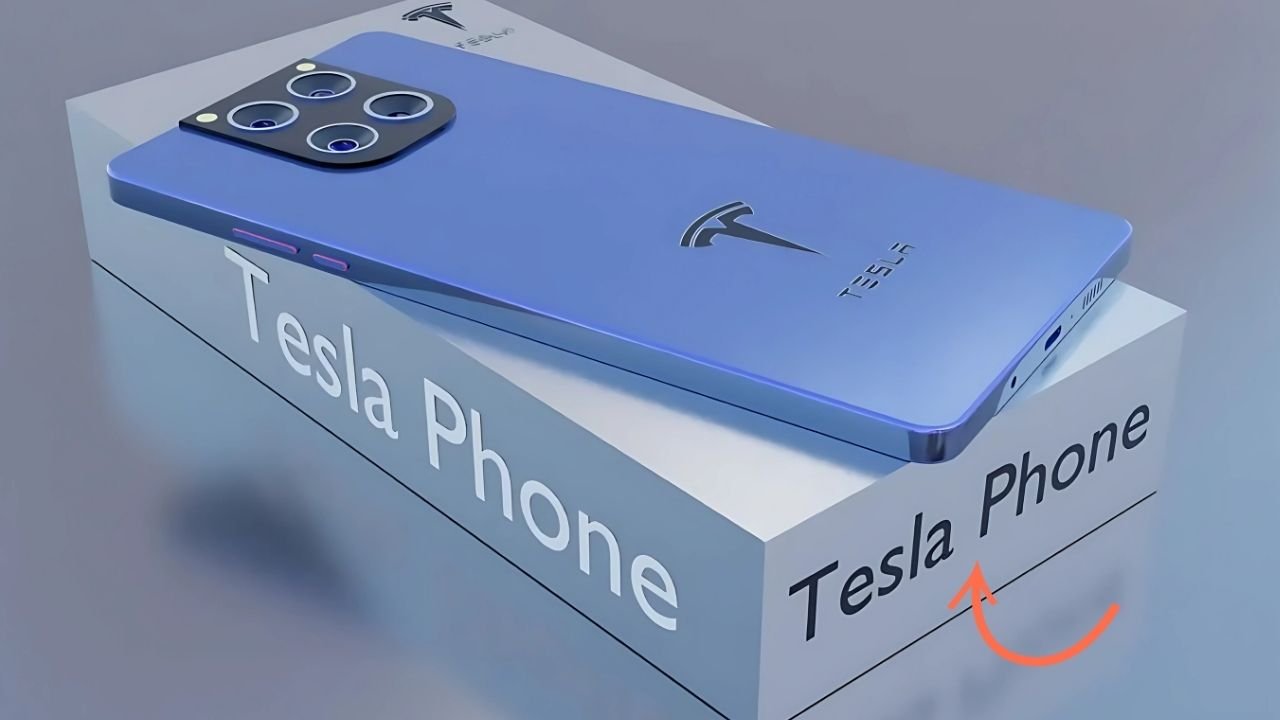Tesla, the brand that reshaped the automobile and captivated the world with its vision of sustainable energy, has now ventured across the threshold of mobility to consumer electronics with the unveiling of the Pi Ultra 5G smartphone. A catalyst for disruption wherever it roams, the company intends to overhaul the smartphone arena by merging cutting-edge hardware, advanced AI software, and a tight-knit ecosystem far beyond conventional boundaries.
Elon Musk has gradually shelled the warning lights on that notion, and the Pi Ultra 5G now crystallizes the long-speculated, code-named Project Hyperphone. Redefining the use case of a pocket device, it positions itself as a unified computing vector, harnessing Tesla’s proprietary strengths in artificial intelligence, energy management, and interplanetary stack connectivity to supersede the automobile-centric legacy.
Design aesthetics dispense with legacy conventions and originality. Forged from aerospace-grade titanium and coated with a matte ceramic skin, the slab exudes both sleekness and hefty resilience. On the reverse, Tesla’s renowned intelligence-free visual language blooms; a subdued “T” emblem houses a patented magnet-free power-transfer coil, and an overall tonal palette reveals three hues—Stellar Black, ethereal Moonlight Silver, and the strictly limited Mars Red, edition-of-one.
Tesla Pi Ultra 5G Display and Visual Experience
At the forefront is a 6.9-inch Super AMOLED 2K display operating at a 165Hz refresh rate. The panel achieves a peak luminance of 3200 nits, making it one of the most luminant in contemporary consumer devices. A newly deployed AI Adaptive View Mode intelligently modulates brightness and contrast in real time, conforming to ambient conditions and thus minimizing ocular fatigue while preserving, and at times augmenting, visual sharpness.
Tesla Pi Ultra 5G Performance Backed by AI
The platform is anchored by Qualcomm’s Snapdragon 8 Gen 4, complemented by a maximum of 20GB of RAM and 1TB of UFS 4.0 flash storage. Tesla stipulates the presence of dedicated AI silicon tuned specifically for immediate voice-driven artificial intelligence tasks, extended-form content generation, and augmented-reality processing. Furthermore, the architecture permits bi-directional coupling with Tesla vehicles, facilitating direct manipulation of climate settings, autopilot oversight, and real-time odometric and energy performance feedback.
Tesla Pi Ultra 5G Satellite and Mars-Ready Connectivity
The hallmark capability of the Pi Ultra 5G is its subordinate yet embedded Starlink geometry. This subsystem enables direct satellite linkage, thereby extending reliable data service in isolation of terrestrial 5G infrastructure. Tesla has intimated that the silicon architecture is designed to be “Mars-ready,” suggesting functionality with future extra-planetary networks—a statement aligned with the corporation’s broader interplanetary directives.
Tesla Pi Ultra 5G Camera System with a Twist
Positioned within an eye-catching glass housing, the vertical module centres a 200MP wide lens, flanked by a 50MP ultra-wide and a 48MP periscope with 10x optical reach. What takes the system beyond sheer megapixels is the custom AI Computational Photography engine, trained to dynamically upscale night-sky detail, record 8K scene data with cinematic colour depth, and replicate daylight-level clarity after sunset. Tesla is betting its software will redefine smartphone optical performance by leaning hard on its neural inferencing strengths.
Tesla Pi Ultra 5G Battery and Charging Innovation
A 6,000mAh cell utilises a hybrid graphene-steel architecture, enabling 200W over Lightning, with an equivalent 100W Qi footprint. What alters the charging narrative further is direct integration with Tesla power, letting drivers top the device from parked vehicle batteries, Sunroof-fed solar racks, or near-field energy blobs at Supercharger sites. By tying power refills to a winery of renewable inputs, the device reinforces Tesla’s overarching green identity and promises engineers a fresh canvas for continual updates to charging curve, cycle life and thermal profile.
Tesla Pi Ultra 5G Market Expectations and Competition
The announcement has unleashed a media vortex, yet analysts temper expectation. Penetrating a market already marshalled by the Galaxy S25 Ultra, Vivo X200 Ultra and iPhone 16 Pro Max, each fortified by multi-year software bonds with consumers, represents a tango with low margin friction. Nonetheless, Tesla is applying what it deems a disruptive torque: constant low-latency Starlink access and a pact with the same software and battery symbiosis that exists within its vehicles. Such an ecosystem-first alert may well capture the attention of Tesla’s technophile heart, should performance metrics substantiate the promise.
Tesla Pi Ultra 5G
With the Tesla Pi Ultra 5G, the conventional smartphone launch is no more than the prologue to a deeper narrative. This handset aspires not merely to command the high-end market, but to re-author the very operating principles of the category by integrating vehicular, orbital, and renewable energy ecosystems within its hardware. Positioned as a lineage nexus for electric platforms, low-earth satellites, and photonic energy generation, the Pi Ultra 5G foresees the emergence of a novel species designated multi-environment smart device.
